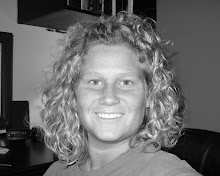Introducing Emmy Faith...
Sickle cell disease is an inherited blood disorder that affects red blood cells. People with sickle cell disease have red blood cells that contain mostly hemoglobin* S, an abnormal type of hemoglobin. Sometimes these red blood cells become sickle-shaped (crescent shaped) and have difficulty passing through small blood vessels.
Hemoglobin – is the main substance of the red blood cell. It helps red blood cells carry oxygen from the air in our lungs to all parts of the body. Normal red blood cells contain hemoglobin A. Hemoglobin S and hemoglobin C are abnormal types of hemoglobin. Normal red blood cells are soft and round and can squeeze through tiny blood tubes (vessels). Normally, red blood cells live for about 120 days before new ones replace them.When sickle-shaped cells block small blood vessels, less blood can reach that part of the body. Tissue that does not receive a normal blood flow eventually becomes damaged. This is what causes the complications of sickle cell disease. There is currently no universal cure for sickle cell disease.
People with sickle cell conditions make a different form of hemoglobin A called hemoglobin S (S stands for sickle). Red blood cells containing mostly hemoglobin S do not live as long as normal red blood cells (normally about 16 days). They also become stiff, distorted in shape and have difficulty passing through the body’s small blood vessels. When sickle-shaped cells block small blood vessels, less blood can reach that part of the body. Tissue that does not receive a normal blood flow eventually becomes damaged. This is what causes the complications of sickle cell disease.
So, that tells you a little about what the disease can do, and the problems that it can cause.
Miss Emmy had her first hospital admission at only 5 weeks old, that was when we were introduced to the Aflac center at Scottish Rite, in Atlanta, Georgia. What a blessing to live in a city where they have one of the best sickle cell centers in the world. Since 5 weeks old, Emmy has been admitted into the hospital over 10 times. The last 2 admissions have been the most serious to date, but no admission is ever fun for us or for her!
The purpose of this blog is to update family and friends on Emmy's progress, as well as hopefully encourage another new mother of a sickle cell child! Thanks for reading!

